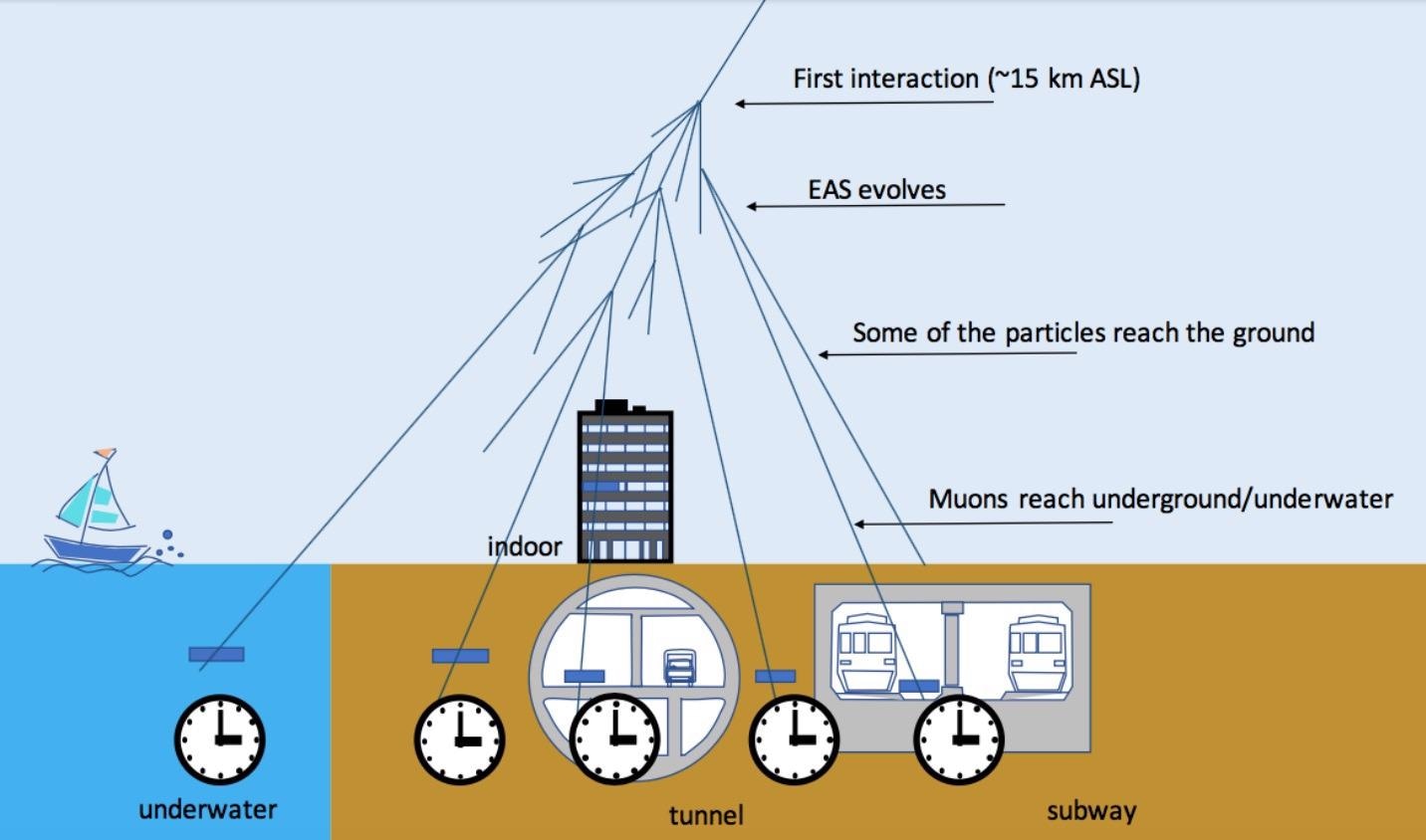Reviewed by Alex SmithMay 10 2022
To synchronize their actions, different technologies, networks and institutions benefit from or need precise timekeeping. Existing practices of time synchronization have various flaws, which a new suggested technique aims to overcome.
 Muon shower. A bonus of this approach to synchronizing time is that if it is further developed into a spatial positioning system, it avoids a potential security issue that GPS cannot. GPS signals are artificial and can be hacked, but cosmic rays cannot be created artificially so cannot be faked. Image Credit: ©2022 Hiroyuki K. M. Tanaka.
Muon shower. A bonus of this approach to synchronizing time is that if it is further developed into a spatial positioning system, it avoids a potential security issue that GPS cannot. GPS signals are artificial and can be hacked, but cosmic rays cannot be created artificially so cannot be faked. Image Credit: ©2022 Hiroyuki K. M. Tanaka.
The cosmic time synchronizer synchronizes devices in response to cosmic ray occurrences sensed by those devices. This might provide precise timing capabilities to remote sensing stations and even underwater locations where existing approaches are ineffective. Early testing indicates promise, but adoption of this new approach may be the major problem.
Civilization is inextricably linked to the concept of time. There was a time when humans used to measure time and organize their activities by looking up at the stars, the sun, and the moon. It is thus fitting that scientists are once again looking to the cosmos to improve man’s capacity to keep time.
Professor Hiroyuki Tanaka from Muographix at the University of Tokyo invented and tested a method that uses cosmic rays from outer space to synchronize various devices so that they agree on the time. It is appropriately referred to as cosmic time synchronization (CTS).
“It is relatively easy to keep time accurately these days. For example, atomic clocks have been doing this for decades now. However, these are large and expensive devices that are very easy to disrupt.”
This is one reason I have been working on an improved way to keep time. The other is that, related to time measurement, position measurement could also be made better. So really, CTS is a precursor to a potential replacement for GPS, but that is still a little further down the line.
Prof. Hiroyuki Tanaka, University of Tokyo
The need for devices to share a sense of time is vital since specific technologies are becoming increasingly important in many parts of life. For instance, computer networks in charge of financial transactions must agree on a time to assure transaction order.
There are sensors that work together to monitor numerous physical occurrences that must agree on time in order to ascertain the origin of a specific reading. Such sensors might even be used as part of a catastrophe warning system.
CTS is powered by cosmic rays from outer space that impact the atmosphere roughly 15 km high, causing particle showers that include muons. Muons travel very close to the speed of light, hitting the ground almost instantaneously. They can readily pierce water or rock and spread out to cover a few square kilometers of the ground as they go.
Independent CTS-enabled sensors in the same particle shower can detect the incoming muons, which will have a unique signature to the cosmic ray event that produced them.
CTS devices can communicate with one another and synchronize their clocks based on when the cosmic ray event occurred by transmitting this information. The ultrahigh-energy cosmic ray impacts happen often enough, around a hundred times per hour over every square kilometer of Earth, for CTS devices to work together in real-time.
Tanaka added, “The principle is robust, and the technology, detectors and timing electronics already exist. So we could implement this idea relatively quickly. Satellite-based time synchronization has so many blind spots at the poles, in mountainous regions or underwater, for example, and CTS could fill these gaps and more. The problem, as with any new technology, is one of adoption. Thomas Edison lit up Manhattan starting with a single light bulb. Perhaps we should take that approach, starting with a city block, then a district, and eventually we’ll synchronize the whole of Tokyo and beyond.”
Journal Reference:
Tanaka, H.K.M. (2022) Cosmic time synchronizer (CTS) for wireless and precise time synchronization using extended air showers. Science Reports. doi.org/10.1038/s41598-022-11104-z.